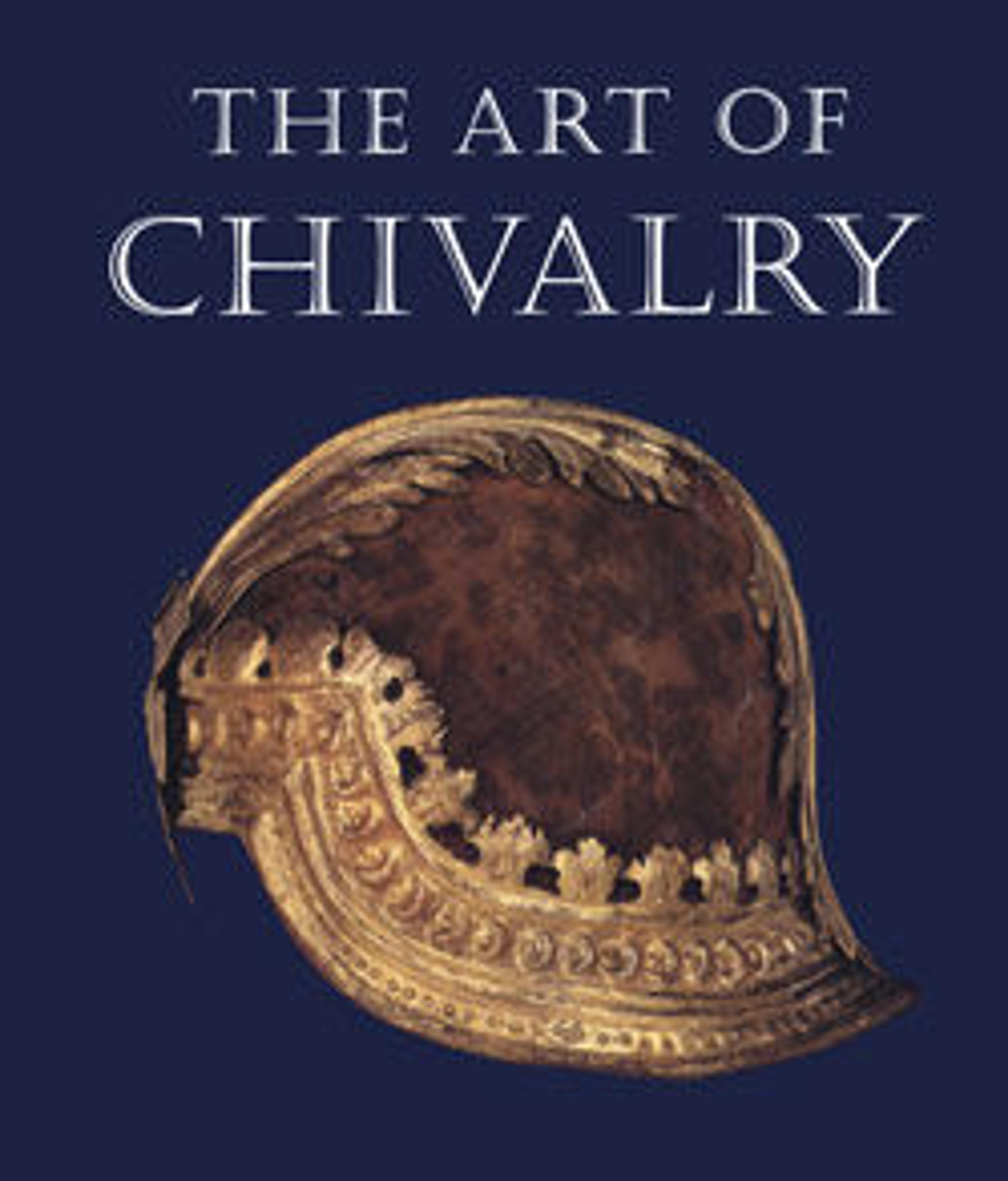Smallsword
The hilt of russet steel is of typical smallsword construction. The pommel is of inverted egg shape, fhattened slightly in a plane with the blade, and is surmounted by a flattened globular button. The wooden grip of oval section is bound with twisted silver wire. The guard comprises the knuckle guard, a rear quillon turned slightly to the outside, two arms of the hilt, and a double-lobed shell. The decoration is encrusted in gold and includes antique gods and goddesses and allegorical figures surrounded by dense foliate scrolls and leafy grotesque masks. Among the recognizable figures are Mars, Fortune, Abundance, Hercules, and two couples, Venus and Cupid, and a nymph and satyr. The narrow, double-edged blade of flattened hexagonal section has a short groove on either side and is inscribed on the obverse TOMAS, on the reverse AIALE.
The form of this hilt, with its squat, inverted egg-shaped pommel, its stocky oval grip, and its relatively small shell guard with heavy moldings along the edges, points to a date in the early years of the eighteenth century. Russet iron hilts, encrusted with silver or gold, were particularly popular during this period. The motifs employed in the decoration, mythological and allegorical figures amid dense foliate scrolls, reflect a baroque taste without any trace yet of the new rococo style that was to influence smallsword ornament after 1730. One of the figures on this hilt, the armed warrior (Mars) on the inner side of the shell guard, is dressed in Roman armor and incongruously wears a full shoulder-length wig of late seventeenth-century type. A gold-encrusted hilt in the Victoria and Albert Museum, London (reg. no. M.955-1928), is decorated with masks and foliage very similar to those on this hilt, and may have been decorated by the same craftsman. Hilts with this type of decoration have been called English, Dutch, or French.
The inscription on the blade refers to the early seventeenth-century bladesmith of Toledo, Spain, Tomas de Aiala. This name, like that of Sahagun (see acc. no. 04.3.281), was frequently added to blades of German manufacture, of which this seems to be an example.
The form of this hilt, with its squat, inverted egg-shaped pommel, its stocky oval grip, and its relatively small shell guard with heavy moldings along the edges, points to a date in the early years of the eighteenth century. Russet iron hilts, encrusted with silver or gold, were particularly popular during this period. The motifs employed in the decoration, mythological and allegorical figures amid dense foliate scrolls, reflect a baroque taste without any trace yet of the new rococo style that was to influence smallsword ornament after 1730. One of the figures on this hilt, the armed warrior (Mars) on the inner side of the shell guard, is dressed in Roman armor and incongruously wears a full shoulder-length wig of late seventeenth-century type. A gold-encrusted hilt in the Victoria and Albert Museum, London (reg. no. M.955-1928), is decorated with masks and foliage very similar to those on this hilt, and may have been decorated by the same craftsman. Hilts with this type of decoration have been called English, Dutch, or French.
The inscription on the blade refers to the early seventeenth-century bladesmith of Toledo, Spain, Tomas de Aiala. This name, like that of Sahagun (see acc. no. 04.3.281), was frequently added to blades of German manufacture, of which this seems to be an example.
Artwork Details
- Title:Smallsword
- Date:1715
- Culture:Dutch or possibly British
- Medium:Steel, gold, silver, wood
- Dimensions:L. 37 in. (93.9 cm); L. of blade 30 1/2 in. (77.5 cm); W. 4 in. (10.2 cm); D. 3 in. (7.6 cm); Wt. 1 lb. 3 oz. (538.6 g)
- Classification:Swords
- Credit Line:Bashford Dean Memorial Collection, Funds from various donors, 1929
- Object Number:29.158.724
- Curatorial Department: Arms and Armor
More Artwork
Research Resources
The Met provides unparalleled resources for research and welcomes an international community of students and scholars. The Met's Open Access API is where creators and researchers can connect to the The Met collection. Open Access data and public domain images are available for unrestricted commercial and noncommercial use without permission or fee.
To request images under copyright and other restrictions, please use this Image Request form.
Feedback
We continue to research and examine historical and cultural context for objects in The Met collection. If you have comments or questions about this object record, please contact us using the form below. The Museum looks forward to receiving your comments.
